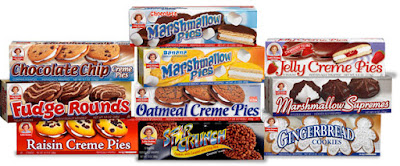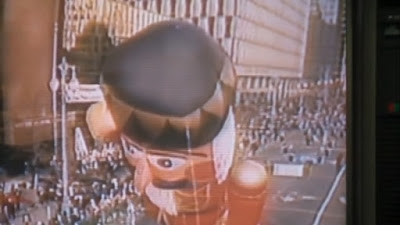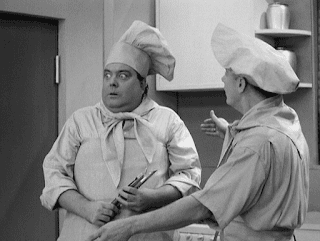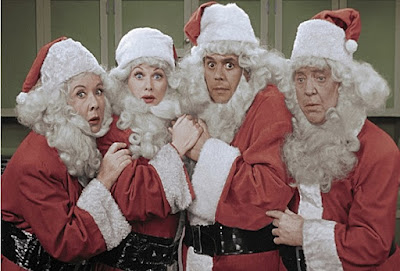In the final post of our month celebrating Wrestlemania and pro wrestling, I'd like to look deeper into a topic that doesn't seem to get much love from today's wrestling fans. Perhaps modern fans have forgotten about this, or maybe it just wasn't as important to others as it was to me.
I was a die-hard WCW fan growing up, especially in the early 90s and for sure at the start of the Monday Night War in the mid-to-late 90s. Then, as most of you reading this already know, WCW rose to the top of the industry and defeated the WWF in the television ratings for 83 straight weeks.
Eventually, the pendulum swung the other way, and the WWF took off to new heights, but before then, you couldn't get me to watch the WWF. Yes, I watched their Saturday morning shows when I was younger, but I had picked my side when it came to the Monday Night War. I always had disagreements with my friends at school who were WWF fans, but one night, I saw something that opened my mind to perhaps watching WWF in addition to WCW.
One Saturday night, I was up late, flipping through the channels with the television on mute. I didn't have a TV in my bedroom like most kids today do, so on Fridays and Saturdays, when I was allowed to stay up because it wasn't a school night, I had to use the TV in our living room. Unfortunately, the living room shared a wall with my parents' bedroom, where they were often asleep by nine or ten.
That night, I just happened to stumble across the debut episode of WWF Shotgun Saturday Night.
Never heard of Shotgun Saturday Night? You're likely not alone.
Debuting on January 7, 1997, WWF Shotgun Saturday Night brought a unique twist to the world of wrestling programming. Designed to be the total opposite of traditional arena-based wrestling shows, Shotgun attempted to match the grimy, dark, small-time feel of Extreme Championship Wrestling (ECW) with the glitz and glamor of a big-time WWF production. The show embraced WWF's New York City roots using unconventional venues, such as nightclubs and even a subway station. It cranked the volume up on the rising "Attitude Era," providing viewers with an edgy wrestling experience unlike anything the WWF had created before.
From the beginning, it was clear that you wouldn't see things like you did on Shotgun on a standard episode of Monday Night RAW. Of course, we all know that eventually, yes, we did, but at the time, it was too foreign of a concept to even consider. Perhaps Shotgun was a test by McMahon and the company to dip their toes into more mature content and older audiences.
This first episode took place in the Mirage Nightclub in New York City, and the venues became almost as important as the show itself. Other events would occur from places like the All-Star Cafe in Times Square and even one inside New York's Penn Station.
The venue wasn't the only unique element of the show. Due to the confining nature of the different venues, the WWF utilized a much smaller ring than the standard 20-foot by 20-foot WWF ring. The wrestling rings also utilized three ropes taped in yellow, which was not used again until 2010 in WWE's NXT. The WWF also, rather than use their "Next Generation Era" logo for the on-screen "bug" (the icon in the corner of the screen), opted for a Police Shield logo that said "WWF Live - New York City - 1997" on it.
When a wrestler entered the ring, the lower graphic displayed their name, as usual. Rather than listing their hometown or height and weight statistics, Shotgun included a quirky tagline, such as "Savio Vega is having a bad day" or "Triple H thinks his pits don't stink."
Once Shotgun got rolling, it would soon replace "WWF Superstars of Wrestling" as the promotion's "B" show. When Shotgun debuted, it featured commentary by Vince McMahon and Sunny; eventually, both were replaced by Jim Ross and Brian Pillman. Similar to ECW, the show aired between 11PM and 3AM on Saturday nights via syndicated channels throughout America.
Shotgun Saturday Night was a syndicated show created by the World Wrestling Federation. When a show is "syndicated," the content owners (WWF) lease the rights to air said content to various stations around the country, and that station has the rights to that show in their particular market. The network itself can decide when and where to air the program. Because of this, Shotgun was occasionally run under different names and formats.
"WWF Shotgun Challenge" was aired in earlier timeslots, replacing WWF Challenge on Saturday mornings in most markets. Shotgun Challenge was a family-friendly version of the program that aired more highlight clips than matches and included voiceover advertisements for merchandise and upcoming ticket sales. This version was eventually changed in late 1998 to the simple name WWF Shotgun and was replaced by WWF Metal in 1999.
In many markets, Shotgun appeared in more traditional time slots, such as weekend afternoons.
In the New York City media market, the program was, for a time, called "WWF New York" on the legendary New York network WPIX-11. From mid-1988 to late 1999, this version was hosted by Jim Ross and Vince Russo. Russo and Ross recorded their voiceover at the WWF headquarters and included several New York-based references for the New York crowd.
While I do remember it airing on PIX, I honestly have zero recollection of this name change. It makes sense, given the show's original mission of highlighting New York nightlife. The format had already changed by mid-1998, so I likely had stopped watching by then.
In 1998, the "WWF New York" show also aired in New York on WPXN, which ran as the "PAX Network." PAX was one of my favorite channels from those days, as it ran nothing but infomercials, old family-friendly movies, and a collection of syndicated sitcom classics. PAX would air Shotgun New York on early Friday nights around 2AM (Saturday morning, really) rather than late Saturday evenings like most channels. In late 1999, the show also briefly aired on WLNY, a local network similar to PAX, which was found on channel 55 in New York.
Matches filmed for WWF Shotgun between 1997 and 1999 were also aired on the international version of WWF Superstars. It included commentary by Michael Cole and Kevin Kelly, and very briefly in 1999, Gorilla Monsoon.
However, within months of the show's debut, the nightclub theme was dropped, and the matches began being taped in an arena before or after Monday Night RAW. According to Bruce Prichard, on his podcast "Something to Wrestle," the show was a major inconvenience. Wrestlers had to be flown from wherever they were in the middle of the tour loop into New York for an appearance on a late-night, small-time show. Wrestling schedules at the time were Thursday to Monday, with non-televised house shows running nightly from Thursday to Sunday, with the RAW taping on Mondays.
This often would lead to many last-minute changes in wrestlers' schedules and advertised appearances, not to mention the additional flight and hotel costs in an expensive place like New York City. Prichard also sights a routine Saturday night in New York, with heavy traffic and high costs associated with New York's labor union laws, plus low ticket sales (due to the smaller venue not lack of interest) all led to the WWF pulling the plug on Shotgun's original incarnation.
Once the show moved back to being filmed inside the arena along with RAW, Shotgun would fall victim to the same concept as several other syndicated wrestling programs of the time. It very quickly became a recap program with original matches featuring low-level talent. My interest in the show waned once the use of unique locations ended, and I suspect many others did as well since the show ended not long after, being canceled in August 1999.
On the debut episode, Marlena (Terri Runnels) gave wrestling fans one of the most memorable moments of Shotgun Saturday Night and the entire Attitude Era. During a match between Goldust and The Sultan, Marlena (Goldust's manager) climbed onto the ring apron and removed her top, causing The Sultan to be highly distracted, costing him the match. Though she was wearing pasties for the live audience and her back was facing the camera, she gave fans at home the appearance that she was genuinely flashing her "puppies" (as The King would say). She was quickly covered up by Bob Backlund.
That same episode would also feature legendary manager Jim Cornette getting stripped to his boxer shorts by a "mini" version of Vader. Cornette was then dumped onto the sidewalk and locked outside, forcing him to wander the streets of New York in his underwear. I'm sure nobody passing by late on a Saturday in New York was even phased at the sight.
On the second episode, filmed in New York's All-Star Cafe, Sunny, at the announce desk, proclaimed she was upset at Marlena's exhibition from the week before, so she released a "home-made" video of herself spending some "adult time" with someone. That someone turned out to be Elmo, as in one of the weirdos in Times Square dressed up as the loveable Sesame Street character. Unbelievable.
In that same episode, Vince McMahon announced that the "Flying Nuns," the tag team otherwise known as The Headbangers dressed up in blasphemous nun outfits, had been arrested for "solicitation." Also, in this same insane episode, Goldust was announced to be pregnant with... something... and next week's show would provide viewers at home a look inside the birth of Goldust's... whatever he was pregnant with. The idea was dropped, and giving birth was never mentioned again until years later when, in an unrelated story, senior citizen May Young gave birth to a rubber hand. Man, wrestling in the 90s was crazy.
The third episode got the wrestling company into trouble with the television networks. The same weekend as the 1997 Royal Rumble in San Antonio, Texas, the company decided to film Shotgun from a club/bar in San Antonio called "Denim and Diamonds" for logistical reasons. Wrestling legend Terry Funk made an appearance on the show, which eventually led to a wild locker-room clearing brawl (as per the storyline) with the guest announcer (and fellow Texan) "Stone Cold" Steve Austin. It wasn't the scripted fight that made this memorable; it was what Terry said during the show.
On his podcast, Bruce Prichard said that right before Funk went to the ring, he told Funk to not say several words, including "hells, goddams, or (several other curse words)." Terry immediately went to the ring and began his interview by calling Michael Cole's mother a whore. He then turned to Vince McMahon and called him a "Yankee bastard" and an "asshole."
While now standard content on almost any television show in 2024, this language was virtually unheard of for television in 1997, even late at night. One would also assume that during a bar brawl in Texas, you would hear much worse, but several channels were upset at the salty language and moved the show back several hours to as late as 2 or 3AM, depending on the market.
Shotgun would air live from Webster Hall in New York City the following week, with a dramatic format shift. Most of the wild, crazy stories, and comedy bits had been removed and focused on in-ring wrestling action. Viewers saw Bret Hart take on Mankind, Crush wrestled Psycho Sid, and in a match against Rocky Maivia, Savio Vega turned "heel" and aligned himself with the Nation of Domination. The heel turn by Vega was the given reason the show departed from its standard format, so that they could move the storylines along quicker. The rumor at the time, however, was, that because of the Pay-Per-View the previous week, the writers hadn't come up with anything useful for the show that McMahon liked. That's more like it, I think.
The following week, back at The Mirage Nightclub, the childish humor returned as The Headbangers, free from their nun gimmick, vomited on one another live on television. Apparently, Vince McMahon thought that was funny. The episode also leaned very heavily on the fish out of water jokes about The Godwin brothers, two redneck pig farmers from The Ozarks, trying to find their way in "the big city."
The following week, the show aired live from New York's Penn Station, providing the company with some of the most iconic images of Shotgun Saturday Night and the entire Attitude Era. When Hunter Hearst Helmsley (the future Triple H) and The Undertaker wrestled in the main event, the match ended in a non-finish brawl. It was after the fact that the two future Hall-of-Famers made some lasting memorable moments and photographs. The Undertaker, surrounded by several New York Police Officers holding back fans and the unsuspecting people just waiting for the Long Island Rail Road, gave Helmsley a tombstone piledriver on an escalator. This incredible scene was made even better when a sprawled out and "unconscious" Helmsely rode the escalator to the bottom as the show ended.
The very next week, when the WWF was running an In Your House Pay-Per-View from Chattanooga, Tennessee. Rather than run an episode from a local hotspot like they did the previous month in San Antonio, the company chose to run a "best-of" clip show featuring the highlights of the most talked about scenes from the last 6 episodes.
After the Penn Station episode, Vince McMahon felt the show was downright boring, aside from the Undertaker/Helmsely spot on the escalator. I disagree, but when Vince was the boss, what he said went. McMahon had already grown bored and frustrated with Shotgun Saturday Night, and coupled with the high costs of producing the show, the WWF decided to bring the Shotgun we knew and loved to an end.
Shotgun saw the debut of the "New" Midnight Express, "Bombastic" Bob Holly and "Bodacious" Bart Gunn. "Stunning" Stan Lane and "Beautiful" Bobby Eaton, they were not. The pair took on the real "Rock and Roll Express," Robert Gibson and Ricky Morton, during 1998's ill-fated attempt by the WWF to bring the National Wrestling Alliance back into the mainstream.
Another memorable ECW-style moment and iconic photograph in wrestling history includes Ahmed Johnson giving a "Pearl River Plunge" to D-Lo Brown onto the hood of a car parked outside on the street.
The night after the Pay-Per-View in Chattanooga, WWF taped the next episode of Shotgun before Monday Night RAW, effectively turning Shotgun into a basic "supporting" program. Jim Cornette took over for Sunny on commentary while regular matches took place. On this show, we saw the debut of the New Black Jacks, Barry Windham and John Bradshaw Layfield. The new "normal" for Shotgun reduced the once vastly different show to the same-old program that just supplemented the flagship RAW, with nothing left to separate itself from the pack of any other weekend show produced by the WWF.
The Shotgun name continued until the weekend of the 1999 Survivor Series when it was replaced by WWF Jakked. "Smackdown!" debuted on UPN about this time, effectively making any weekend show, like Shotgun, the "C" show.
Despite its relatively short lifespan, WWF Shotgun Saturday Night produced several memorable moments, from chaos in a subway station to impromptu bar brawls in a Texas nightclub. This show captured the frenetic energy of the WWF's Attitude Era and the gritty, dark nightlife of New York in the 90s.
While forgotten by many, the impact of Shotgun Saturday Night continues to resonate with fans who remember this bold experiment and unique approach to storytelling. Although it may have been brief, and the stories and wrestling didn't always "work as planned," its impact on boundary-pushing and risk-taking on the industry remains undeniable. Ultimately, Shotgun helped WWF gain a new fanbase, seeking a new hip and edgy wrestling show. It may have predated the true "Attitude Era" slightly, but it wasn't the worst first step in that direction. Vince may have considered it a failure, but by the end of 1996, he realized the winds of change in the traditional wrestling audience that led to the greatest time in history to be a wrestling fan.











.png)





Comments
I remember Shotgun Saturday Night. WWF hyped it up on other programming, and I was dying to see it, but it never aired in my part of the country until just AFTER they made it a taped arena show, so I missed all the fun stuff I was dying to see. =(
ReplyDelete